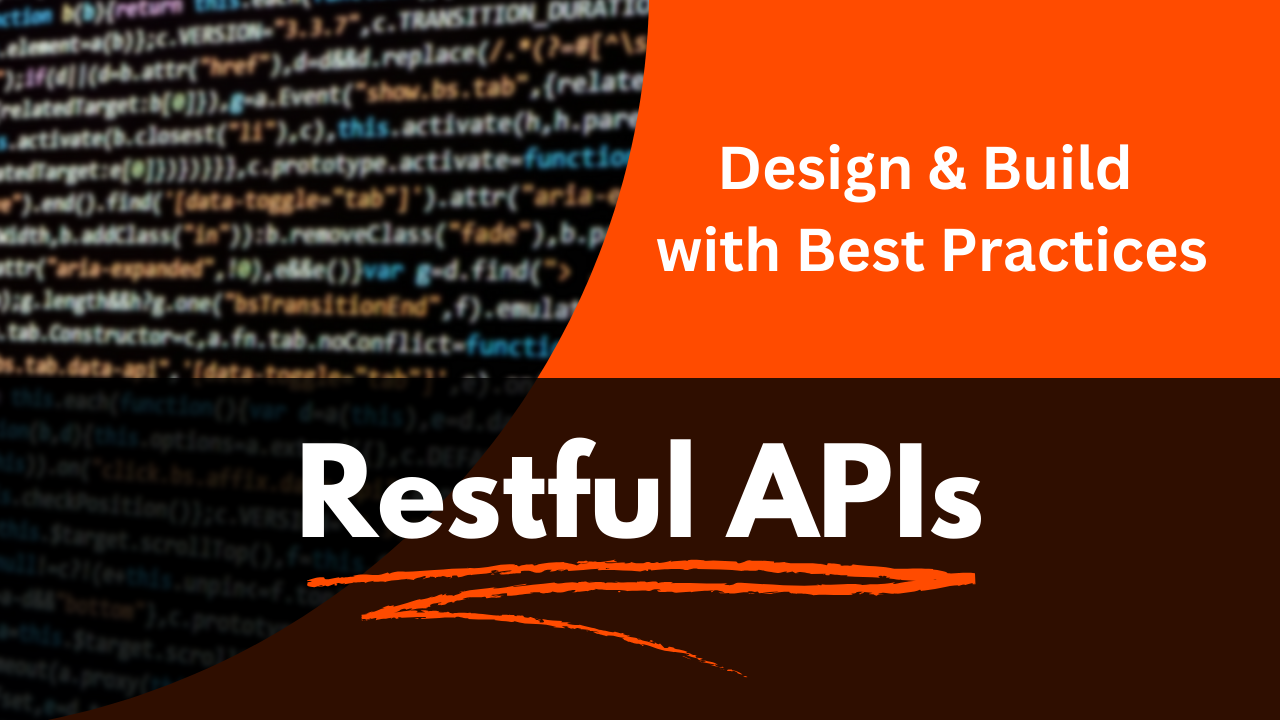Design & Build with Best Practices



RESTful APIs (Representational State Transfer) are an essential part of modern web development, enabling communication between clients and servers. This course will teach you how to design and build efficient, scalable, and secure RESTful APIs using industry best practices. You will learn about HTTP methods, status codes, request and response formats, authentication, and versioning. By the end of the course, you’ll be able to create APIs that are easy to consume, maintain, and scale, and integrate them into real-world applications.
Understand what REST is, the principles of RESTful API design, and why it’s widely used for web services.
Install and configure a Node.js and Express project to build your API, including the necessary dependencies.
Learn how to set up a RESTful API using Node.js and Express, handle HTTP requests, and manage routing.
Learn how to organize and structure API routes in Express to keep your application scalable and maintainable.
Understand how to send and receive data in JSON format, and how to structure your API responses effectively.
Learn how to use HTTP status codes to indicate the success or failure of an API request, and handle errors in a consistent way.
Implement authentication using JWT (JSON Web Tokens) and secure your API with role-based access control (RBAC).
Understand how to version your APIs and maintain backward compatibility for future updates.
Learn how to prevent abuse and ensure fair usage by implementing rate limiting and throttling in your API.
Learn how to build a complete RESTful API and consume it using a frontend application (e.g., React or Angular).
Use tools like Postman or Insomnia to test your APIs and ensure that they work as expected.
Learn how to document your API using Swagger to make it easy for others to understand and use.
Understand how to deploy your RESTful API to cloud services like Heroku, AWS, or DigitalOcean.
Apply everything you’ve learned to build a full-featured, production-ready RESTful API with authentication, security, and versioning.
Basic knowledge of JavaScript (preferably after completing the JavaScript and Node.js & Express courses).
Familiarity with HTTP and web development concepts (optional but helpful).
A computer with internet access.
Code editor: Visual Studio Code (recommended).
Node.js installed on your system (instructions provided).
Basic understanding of working with APIs and JSON.

Master API design: Learn how to design RESTful APIs that are easy to use, secure, and scalable.
Build production-ready APIs: Learn how to build APIs that can handle real-world use cases with authentication, error handling, and data validation.
Secure your APIs: Implement authentication and authorization, ensuring that your API is accessible only to authorized users.
Follow best practices: Learn industry best practices for API versioning, documentation, rate limiting, and error handling.
Integrate APIs with frontend applications: Understand how to consume and interact with your APIs using frontend technologies like React or Angular.
Deploy your APIs: Learn how to deploy your RESTful API to the cloud, making it available for users worldwide.
Copyright © 2025 CodeAcademyPro | All Rights Reserved.